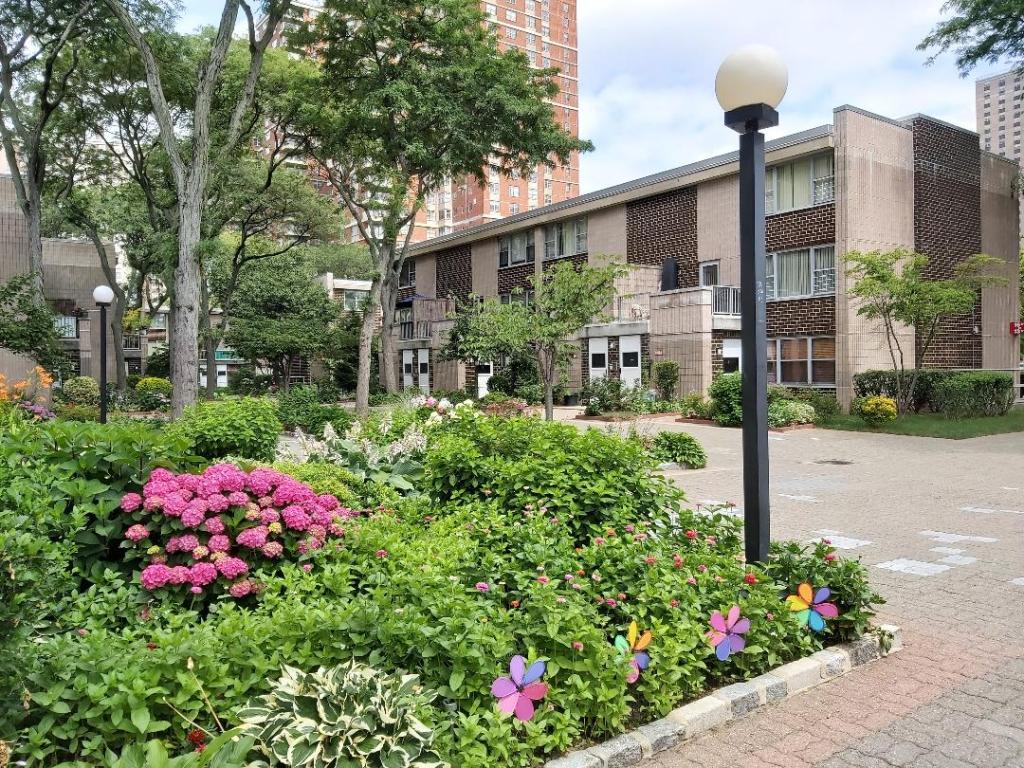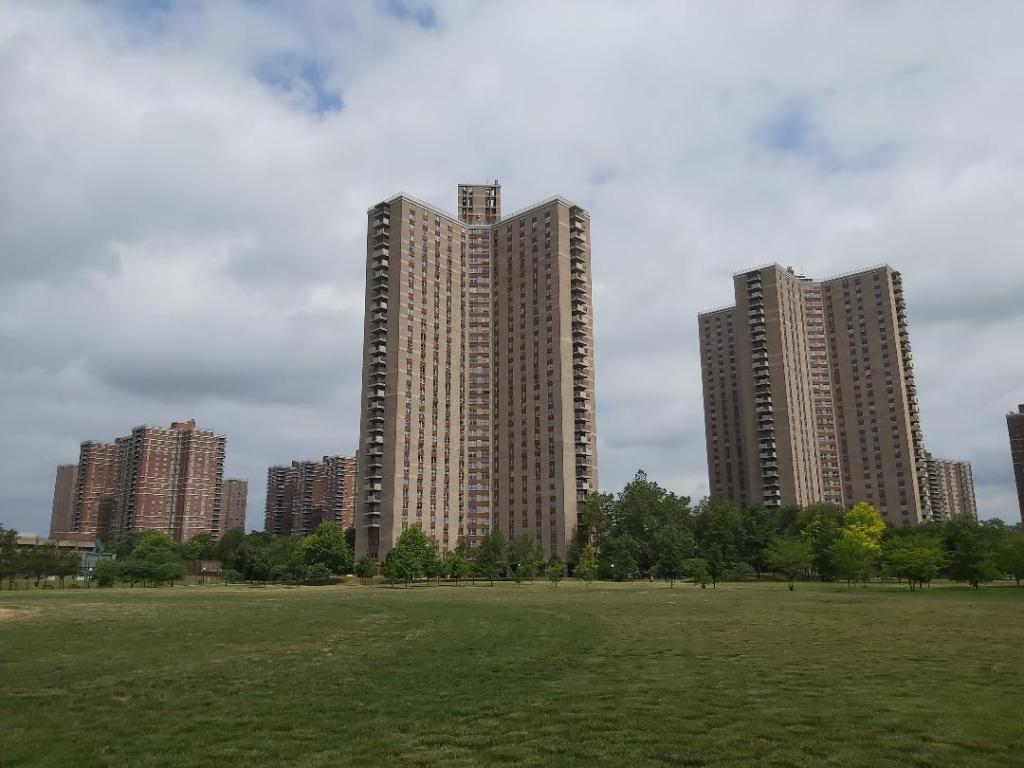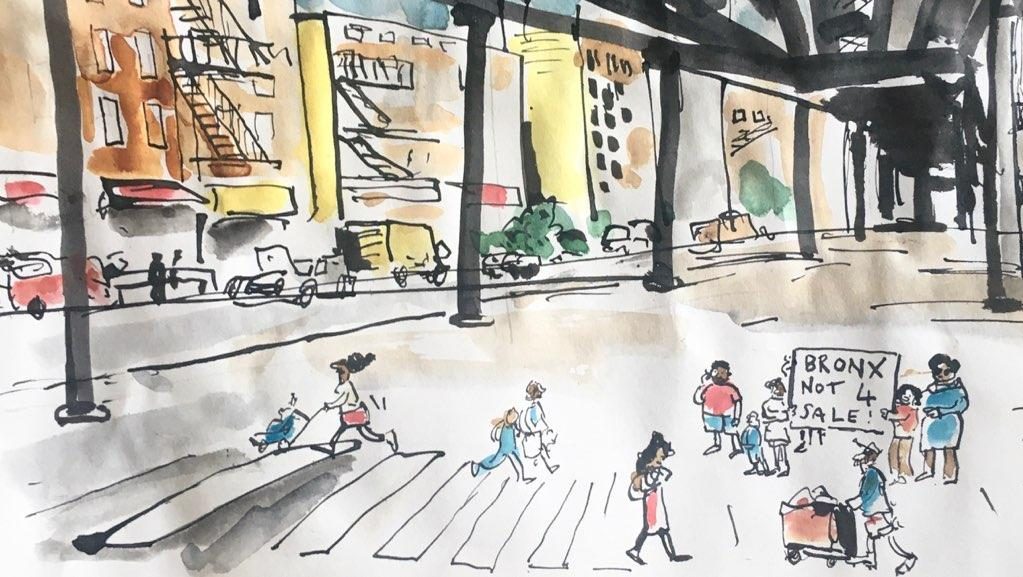Co-Op City is a couple of miles east of where I’m staying. Reputedly, it’s the biggest housing co-operative in the world and part of a US tradition of non-market housing that may confound expectations.
I went there yesterday for a walkabout. It’s massive. Many years ago, I spent a bit of time on one of the huge Soviet-era estates in Budapest and that was the last time I saw mass housing on this scale. But size isn’t everything and my brief visit left me, once again, with an abiding feeling that it’s not that we don’t know how to solve the housing crisis, but that vested commercial and political interests don’t want us to.
Too many of the “solutions” discussed these days aren’t proportionate to the size of the problem. We’ve lost the scale of ambition that Co-Op City represents. First occupied in 1968, it has a population of 50,000, living in about 15,300 homes, in 35 blocks, plus 7 clusters of townhouses, on a site of 320 acres, but where only 20% of the land is built on, the remainder being landscaped open space, with playgrounds, gardens and sports fields.
Of course, some will immediately dismiss Co-Op City as the dystopian, modernist, Corbusian nightmare and the product of the authoritarian Big State. But what if it works? Based on one short visit, I can’t say if Co-Op City is a good place to live. I’ll try to find out more. But first impressions were of an immaculately maintained, thoughtfully designed environment where people have been able to live sheltered from the rapacious housing market that’s causing so much damage elsewhere.
In some quarters, the fetish of architecture and design obscures the social purpose of housing, but sometimes, it also conceals deeper ideological antipathy. As the name suggests, Co-Op City was built explicitly as a challenge to the norm of privatised domesticity that underpins capitalism. Moreover, it was the brain-child of trade unionists who aggressively pursued the aim of better homes and places for working class people.
New York City, in some ways the apogee of the capitalist metropolis, has thousands of co-operative homes (it also has a huge stock of public housing, but I’ll save that for another day). They were the product of demands for improved housing that came through unions, notably the Amalgamated Clothing Workers of America and were taken up by leaders like Abraham Kazan and Sidney Hillman, a former member of the revolutionary Bund movement in his native Russia.
The campaigning and lobbying that led to Co-Op City and many others like it, began in the 1920s and continued through decades, based on a model of public investment and tax exemptions to allow land to be purchased and homes occupied on the basis of limited equity i.e. prevented from being bought and sold with huge capital gains, or losses, by being taken out of the speculative open market, so available at prices affordable to people with moderate incomes.
I’m sure it’s not perfect. Some of the deal-making to get Co-Op City built entailed dubious partnerships with the likes of Robert Moses, the “master builder” of NYC who some say did more harm than good during his long career. There’s also the legitimate question of whether co-operatives create a ring of exclusivity that denies access to those in most need which, particularly in the US context, raises the specter of racism. I’ll try to find out more about the past and present of Co-Op City, but like other examples of de-commodified housing, it’s stood the test of time.





The impact of trade union actions in the housing area in NY and I assume other cities in the US is a stark contrast with such political interventions by trade unions in the UK. The photos only emphasise the lack of such developments here, although they are reminders of some council estates from the 1960s like Roehampton, which of course was GLC.
Are these areas “fenced”? Are they open entry? I know there has been evidence historically of racist controls on occupancy in such developments? How do people get accepted as tenants / owners?
LikeLike
Good points all and I will try to find out more. The unions were particularly active on the housing front in NYC. I’m not aware of it happening in other parts of the US. But it has (mostly in periods of desperation with government inaction) crossed my mind that our unions in the UK today, should follow the NYC example. I’ve never raised it too loudly though, for two reasons. First, would this let the government off the hook when it should be councils who are given the money to invest in housing? But secondly, given our unions performance in other areas just now, I wonder how they’d do as property developers/landlords? Unite’s current difficulties with the hotel project in Birmingham aren’t a good omen. But I do think this is an issue we should keep on a back-burner somewhere. We may get to a position where we have no choice but to use unions significant financial clout to build homes (although again, this ended very badly when it was done in Germany).
Back to Co-Op City, the estate itself is open, but with controlled entry on block doors. I believe the resident population is relatively balanced, ethnically and the development was opened after the period when public and other non-market housing was “whites only”. As far as I know, qualification is by income i.e. a minimum and maximum. This is very typical in the US and is a form of means testing we have rightly resisted in the UK (although it is increasingly happening by default). More to follow…x
LikeLike
Interesting overview of the history here;
Good stuff Glyn, your posts are not helping the concept of ‘staycation’ this year!
LikeLike
I’m just whetting your appetite. It’s a public service.
LikeLike